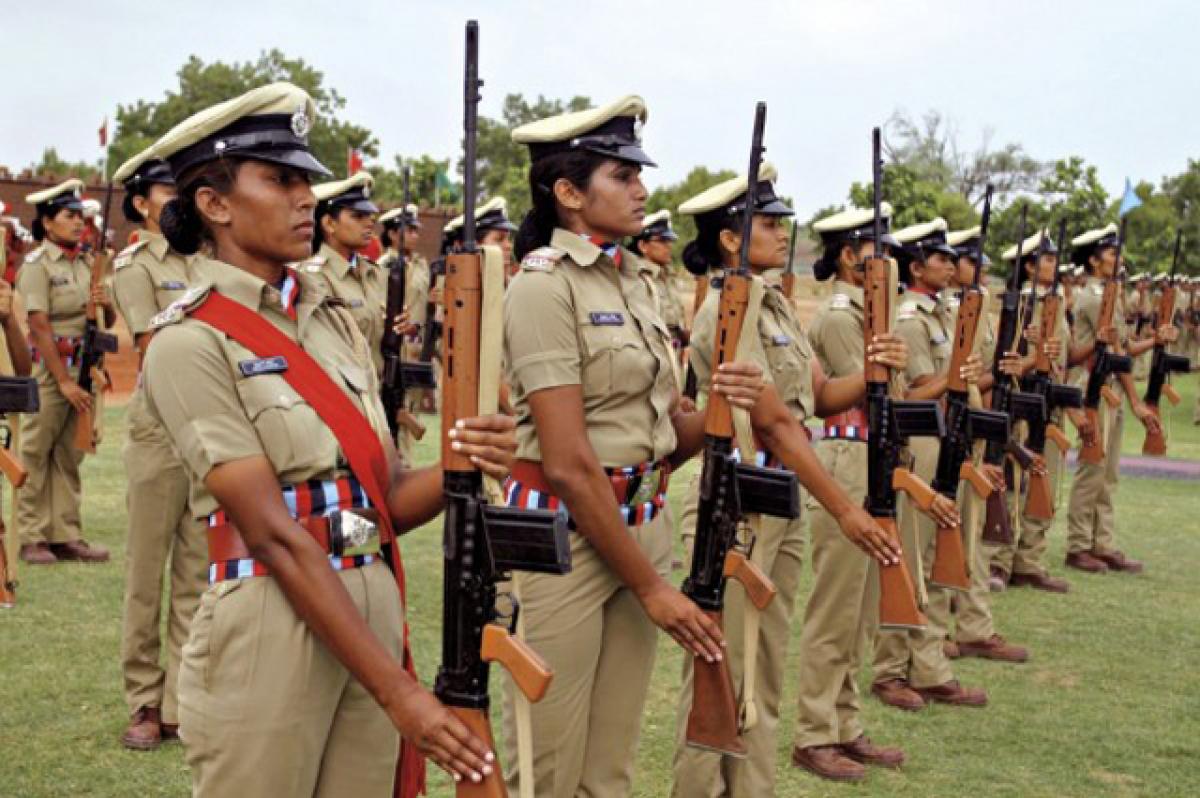Live
- "Jathara" film success dedicated to the audience - Movie Team at the Thanks Meet
- Hamas denies its leaders leaving Qatar for Turkey
- Strategic Internal Audits in IT and Procurement Functions
- Pawan Kalyan addresses legislative council, emphasis on panchayat dumping yard management
- Muzarai dept to evict encroachments of temple lands
- CM Siddaramaiah inaugurates 27th Edition of Bengaluru Tech Summit
- India can and will play better, says Manolo Marquez after draw against Malaysia
- Top 4 Men’s Grooming Platforms Revolutionizing Self-Care in India
- 58% cut in NABARD funds from ₹5,600 cr to ₹2,340 cr for state
- YS Sunitha visits AP assembly, seeks update on probe in YS Viveka's murder case
Just In

Women in police force in dismal state:Survey . Women are grossly under-represented in several fields in India: whether in politics, senior corporate leadership or even the bureaucracy.
A new report by the Commonwealth Human Rights Initiative (CHRI) paints a dismal picture of the women in the police force. Women make up only 6.11% of the total police force in the country
Women are grossly under-represented in several fields in India: whether in politics, senior corporate leadership or even the bureaucracy. A new report launched by the Commonwealth Human Rights Initiative (CHRI) shines a light on the abysmally low numbers of women in the police force in India.

In India, the first woman police officer was appointed in Kerala, in the Travancore Royal police in 1933. The first woman IPS officer was appointed in 1972. Of the 17,22,786 police officers in the country today, only 1,05,325 are women across all ranks. This amounts, on an average to a mere 6.11% of the total police force in India, as of 1st January 2014 ( as per the date with Bureau of Police Research and Development, Ministry of Home Affairs).
The numbers and proportion of women police officers vary significantly between the states, with Chandigarh having the highest (14.6%), followed by Tamil Nadu (12.4%) and Andaman & Nicobar (11.2%). Lowest among the states are Meghalaya (2.8%), Nagaland (1%) and Assam (0.9%). The numbers have grown, albeit marginally, in the last 5 years, yet they are woefully short of the 33% threshold recommended repeatedly by the Ministry of Home Affairs.
Gender disadvantage, the report notes, starts from the recruitment process itself. Many state police forces continue to have separate cadres for men and women at state-level entry points, which means that very few vacancies for a particular rank are reserved for women, which affects their career growth. Andhra Pradesh has done away with separate cadres for men and women.
Low numbers are also due to lack of women coming forward to join the forces for several reasons. A parliamentary committee recommended that the allocation of central funds for modernization of police force should be linked to recruitment drives to increase the representation of women, which the Ministry of Home Affairs has shown little enthusiasm for.
The culture within the police services is inherently patriarchal leading to negative stereotyping of women police officers and entrenched gender bias. This forces women to work extra hard to dispel those notions. Negative attitudes are severely compounded by prevailing culture of sexual harassment at the workplace, though a large part of it goes under reported for lack of complaint mechanisms or insufficient knowledge of the women personnel.
In focus group interviews conducted by CHRI, 7.5% of respondents in Kerala and Haryana, talked about sexual harassment they faced. One of the gravest limiting factors and a gross human rights violation is the lack of even basic facilities like toilets for women in the police stations. This problem is even worse for Women Traffic Police.
Similar discrimination between cadres is also seen in maternity policies. While IPS officers are entitled to 180 days maternity leave and up to 2 years of childcare leave, state cadres get leave ranging from 135-180 days. Child care facilities are practically non-existent for women in police forces.
Women were often found to be working more than 12 hours a day and often in postings outside their home towns which made their dual roles within home and work very difficult. This was particularly acute in posts that handled women’s help desks and also all women’s police stations.
By Bhanupriya Rao

© 2024 Hyderabad Media House Limited/The Hans India. All rights reserved. Powered by hocalwire.com







